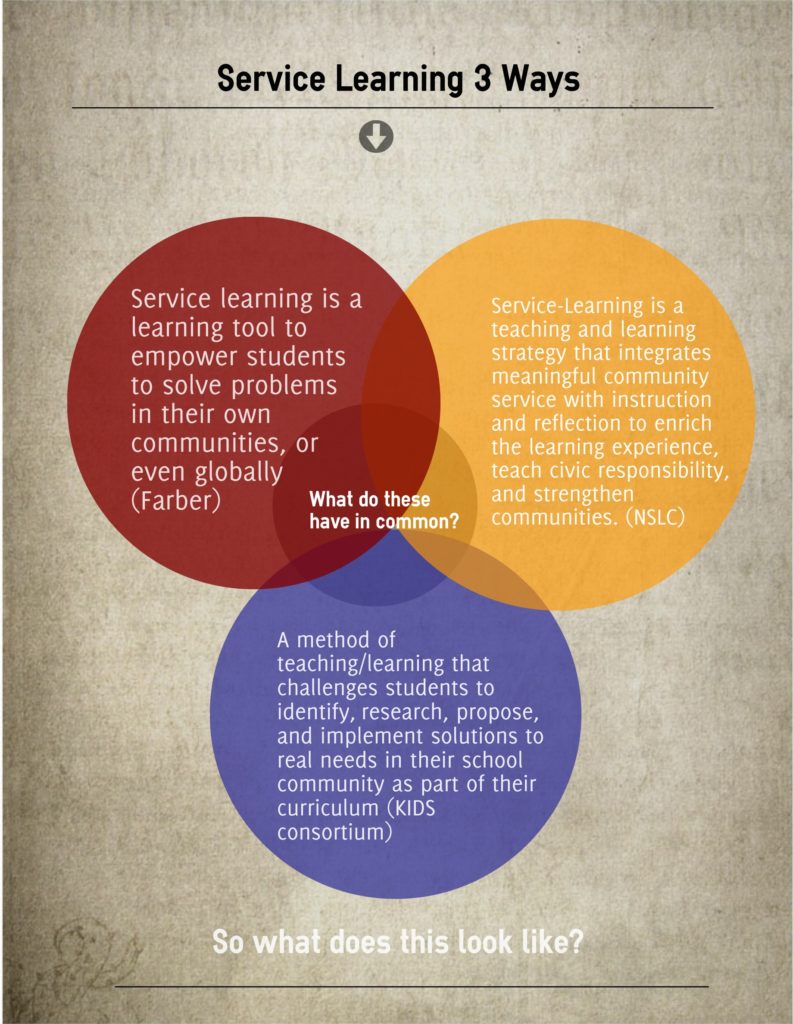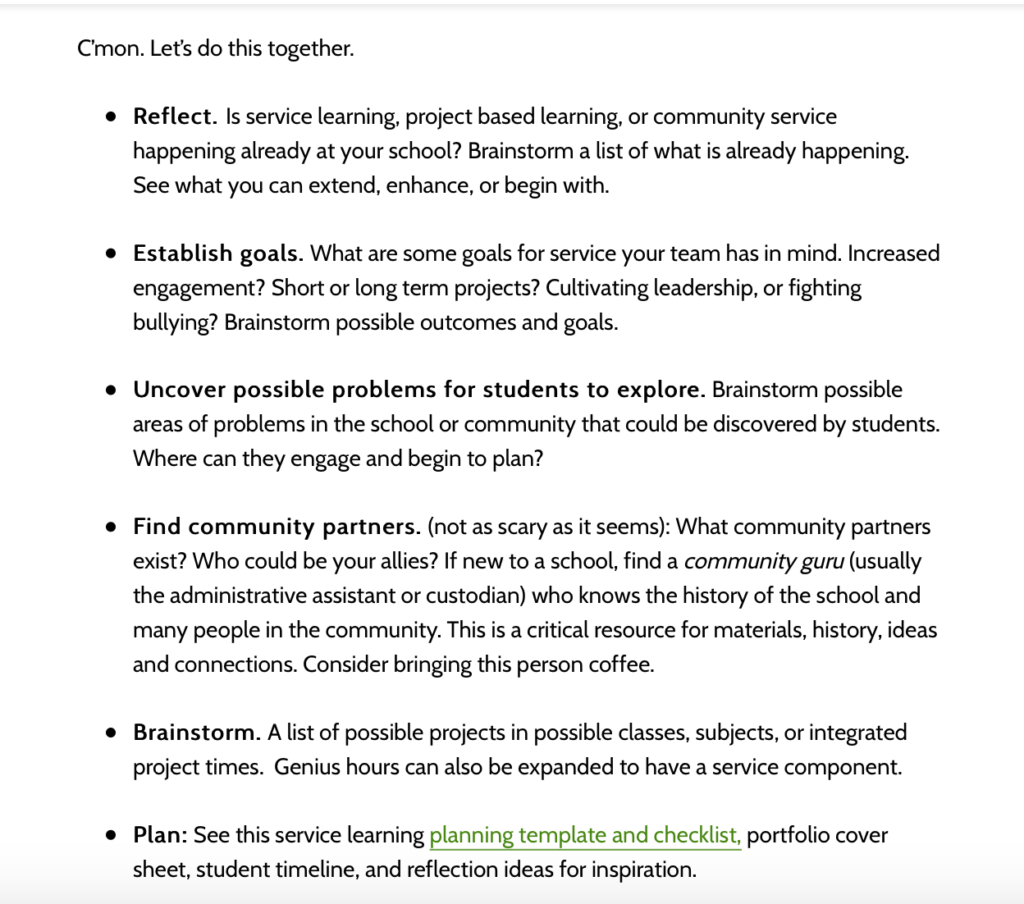Service learning
Creating teaching and learning opportunities where students identify, research, propose, and implement solutions to real needs in their school community as part of their curriculum.
Ponder these other definitions. What do they have in common?

Why do service learning?
Read researcher Shelley Billig’s take on why service learning benefits students in many ways.
That’s not all! And service learning can help meet the developmental needs of early adolescent students.
But isn’t service learning basically just community service? No, and here is why. It’s a student process, not a teacher one.
Service learning is about connecting community strengths and needs with the interests and skills of students to improve a condition.

Use this service learning template to explore community strengths, then on to needs, learning goals, plans, projects and reflections.
Start Here
 Here’s a Service Learning 101 post with clear steps to get you or your team started with service learning. You can do this!
Here’s a Service Learning 101 post with clear steps to get you or your team started with service learning. You can do this!
Look for Assets of Your Community
Beginning with an asset based approach values and respects what is special and already great about your community. Starting from an asset based lens helps students see this as a place to start from, then after thinking about assets, starting to look for areas to improve upon, together. Here is one process for asset mapping and prioritizing using the United Nation’s Global Goals, which we shared at AMLE 2018.
Caution!
Service learning can increase othering and stereotyping if not done in a spirit of reciprocity, mutual respect and understanding. Everyone is learning together. Make sure to focus on a shared learning space with your team and community. In fact, service learning is a perfect pedagogical space to help students explore systems of injustice and become empathetic change agents in their communities.
What does it look like in action?
- Service learning (during a pandemic)
- A critical lens on project-based learning
- Connecting Vermont students with dairy farms
- Introducing: asset mapping
- All about service learning
- What does service learning look like in Vermont?
- How to plan a service learning project in 5 stages
- Welcome to your in-school internship
- Introducing “Cabot Leads”
- 3 strategies to create supportive structures during project time

